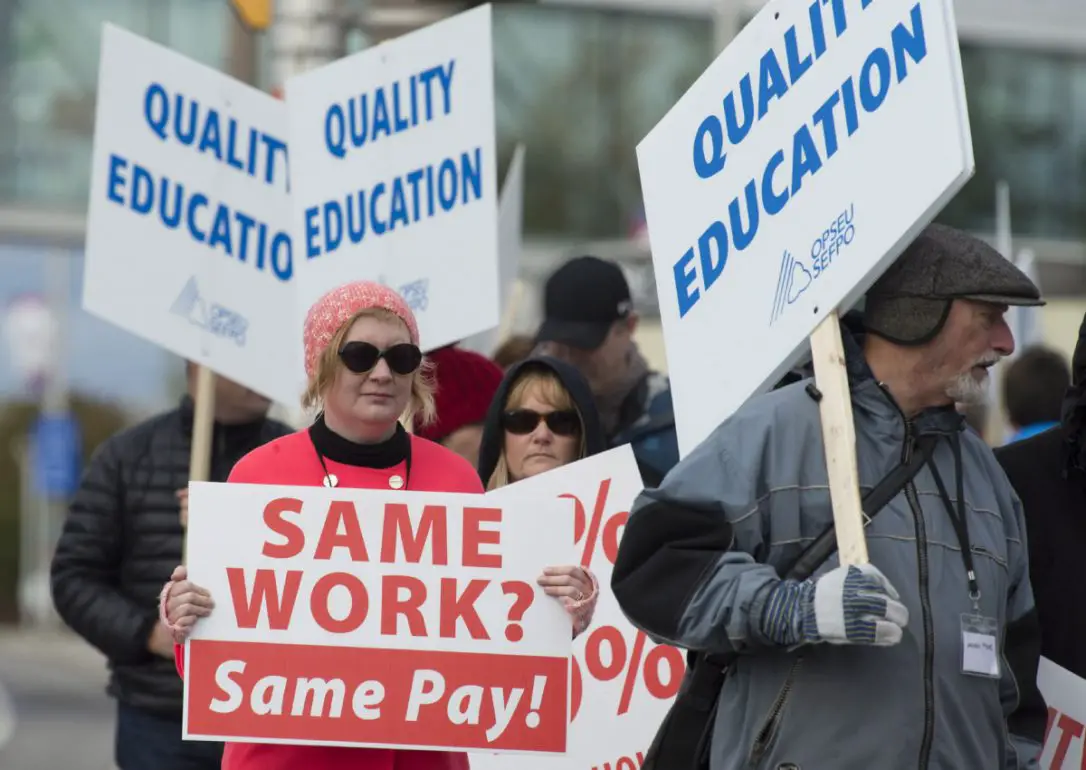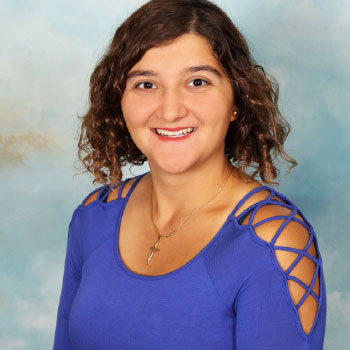On November 21, the five-week Ontario colleges faculty strike ended, making it the longest in Ontarian history since 1984. Ontario Premier Kathleen Wynne’s administration signed the bill on November 18 bringing approximately twelve thousand faculty members, who are represented by the Ontario Public Service Employee Union (OPSEU), and approximately five hundred thousand students across the province, who were affected by the strike, back to school.
Wynne said, in an interview with CBC’s Ontario Today staff, she wanted to see students back in the classroom immediately: “When I say immediately…I would very much like to see students back early next week, so I mean immediately.”
Liberals and the New Democratic Party (NDP) temporarily stifled the passage of the bill which delayed students’ and faculty’s return to the classroom. Namely, the NDPs, led by Andrea Horwath, were in support of college staff reaching a negotiated settlement while Liberals drew up a proposed legislation without meeting all of OPSEU members’ grievances.
In light of Wynne’s words, on November 18, the College Employer Council (CEC) issued a forced contract to eligible OPSEU members, which 86 percent rejected with a 95 percent eligible voter turnout.
The contract offer included a 7.75 percent salary increase over four years, improved benefits such as extended pregnancy and parental leave and ways to address the issue of part-time employment.
[su_youtube url=”https://www.youtube.com/watch?v=SCyMOnVBLlk”]
Geoff Ondercin-Bourne, president of OPSEU Local 240 representing the Mohawk College faculty in Hamilton, Ontario, said though faculty members are glad to be back at work, they expressed dissatisfaction with being legislated back by the government of Ontario and still without a contract. “Teaching is what we do, so it’s good to be back doing that,” he says.
Whereas faculty pushed for governmental support for their stipulated grievances, college students did not simply wait for the government to step in while on strike—they voiced their own concerns. After over sixteen thousand college students signed the online petition for a tuition refund, co-authored by Humber college students Greg Kung and Amir Allana with the hashtag #wepaytolearn, students achieved provincial recognition for their worries over the strike.
Kung and Allana initiated the #wepaytolearn petition from conversations with friends and colleagues over feeling left out as the “third stakeholder” in the dialogue between college educators and the Ontario government.
“We want to send a clear message to both college administrations and unionized faculty: We pay your salaries. It is our tuition money that you are fighting over. Get back to the bargaining table, compromise and figure it out. Or we want our money back,” said Allana.
Expressing their desire to receive a fair refund for their lost education doesn’t mean that Kung and Allana have ignored faculty’s reasons for striking.
“We are not taking a position. Both sides have a right to bargain and both sides have a right to this conversation. We are just a third stakeholder that has not been heard throughout this process,” said Allana.
Cited within Kung and Allana’s petition, the 235,000 full-time and over 300,000 part-time students pay tuition fees varying from $3,800-$7,500 for two semesters. Some are mature students with families to support and, as parents, their hard-earned money goes toward their children and their future education.
Students supported the demand for tuition reimbursement for each day lost in the event of a strike—specifying $30 per day for full-time students and $20 per day for part-time students.
Paying for tuition in return for education and losing the opportunity to learn hurts, but the delayed graduation expectations hurt students’ long-term financial planning and ability to enter the workforce as well.
Merisa Buragina, a dental hygiene student in London, Ontario at Fanshawe College, expected to graduate in April and register for her practical exam to begin working in May, but will now have to wait until September to enter the workforce.
“This means that I may not be able to start working until the end of 2018, which is hard when I have to pay off $50,000 in loans,” she said.
Even members of the OPSEU expressed discontent over the strike. The OPSEU cited, as major reasons for agreeing to the strike, a desire for a decrease in the number of part-time instructors and an increase in available full-time positions for instructors, more job security and an increase in pay.
Carolyn Dobbyn, a full-time faculty member at George Brown College in Toronto, reflects on her over-worked and under-payed part-time staff member colleagues: “Strikes are never a fortunate thing. We have a fantastic group of contract staff, but they put in long hours that they’re not paid for and they’re doing the same work we’re doing.”
The effort to ameliorate employment opportunities and conditions for part-time staff has hardly changed over the last decade since the number of part-time teaching positions has increased by 60 percent while full-time teaching positions have increased by less than 20 percent. Part-time staff make up 70 percent of all college teachers.
Full-time professors can start with $60,000 a year with a potential salary increase of $106,000 over time. Part-time employees, who teach between six to twelve hours per week, can make between $48 and $140 an hour depending on their experience and education. Teaching positions in the OPSEU fill by seniority and experience rather than qualifications—many new members of the union lack the experience necessary for a full-time position.
College students during the strike found it difficult assessing the merits of finding part-time work since their time out of school was uncertain. However, students already working in part-time positions kept busy through the duration of the strike.
Marc-Antoine Gagnon, Burlingtonian and a second-year civil engineering technology student at Mohawk College, said he was one of the fortunate students who were able to work while the strike continued: “I was lucky enough to pick up shifts at work and keep busy. I know that wasn’t the case for everyone. People have bills to pay and plans for the holidays. It’s hard to find work when you don’t know how long you would be able to work.”
Communication between students, faculty and colleges contributed to the uncertainty of the strike for many students. “The communication between the union members, school and the students has been very frustrating. The school did not let us know what was going on and the little information you could find were in articles. I found myself annoyed after work thinking about the uncertainty of the outcome of the strike,” says Gagnon.
Elizabeth Greig, Burlingtonian and a first-year occupational and physiotherapy student at Mohawk College, also shared Gagnon’s frustrations about the lack of communication: “Before the strike was official and actually took place, I heard very little about it. We were given very little for updates other than ‘the strike is still in action, please check your emails for updates.’ This was very infuriating as we had no estimate as to when we would be returning or what breaks or holidays we would be losing so we had to just sit and wait to hear as we were unable to commit to work or plans.”
For most colleges, the fall semester will be extended into the week of December 18, finishing as late as December 22. Some colleges will extend the fall semester into January also. Many students articulated their disappointment with the adjusted holiday break schedule.
“I also find it very unfair that us students are having to pay for the time lost by losing the time off in December we were promised in September. We all have lives and schedules that we plan around so now not having that time off and having to study for exams during our shortened break—for me, this is very stressful and anxiety-inducing,” says Greig.
Given two weeks from November 21 to December 5 to obtain a full refund for their fall semester tuition fees, Ontario college students had the option of dropping out of the fall semester and re-applying for the same program in the next semester—a precarious move since admission into the winter semester is not guaranteed. A full reimbursement on tuition does not mean a full reimbursement on all tuition supplementary and ancillary fees. For example, tuition costs $2,595 for the fall semester at Fanshawe College though after deducting $616 due to ancillary fees, students will receive a refund of $1,979.
More than one thousand five hundred students across Southwestern Ontario have dropped out of their college institutional system for the fall semester after the strike—of those one thousand five hundred students, eight hundred students opted for a full refund at Fanshawe College. Students are divided in their opinions on dropping out for a full refund.
Full-time domestic or international students who remained enrolled in their program during the strike, though experienced financial difficulty during that time, are also eligible to apply for up to $500 of a Student Strike Relief Fund.
Greig says, “I definitely think the government should be doing more than giving Ontario college students two weeks to decide to drop out and get a full tuition refund, and the opportunity to apply for $500 for those who ‘experienced financial hardship.’ In retrospect, the strike was five-weeks long and we only gained back two and a bit by bumping the semester into January. Therefore, the colleges have pocketed money from thousands upon thousands of students as they paid for two and a bit more weeks of in-class teaching than what we received. Every student should be eligible and receive a refund of some sort—we were all affected.”
“For the inconvenience, everyone should get some compensation along with what they already have in place. Both semesters are more crammed for us and the extensions will shorten my co-op terms by a few weeks,” says Gagnon.
Though many students expressed their discontent for the minimal amount of funding offered to students after the strike, some are satisfied receiving anything back at all such as Amanda Dempster of St. Clair College: “I feel that any money we’re getting back for the time we missed is good, but unfortunately they can’t give us back the time we’ve missed.”

















